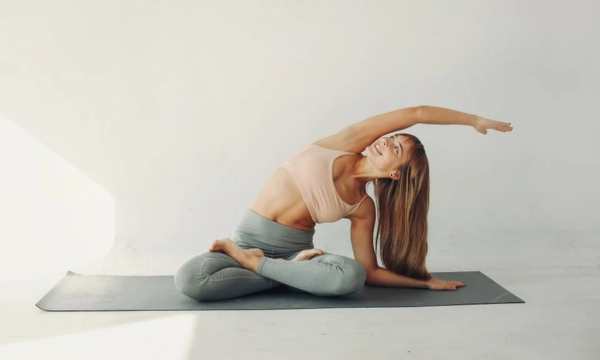Discover in detail how consistently practicing simple back stretches can effectively shield your spine from the inevitable physical wear that comes from a long, intense workday.
Ad
For you, as a massage therapist, the spine is the cornerstone of your craft, subjected daily to long hours of bending and to the ongoing application of pressure.
Choosing to ignore the first signs of stiffness and discomfort can, over time, seriously compromise not only your own well being but also the quality of your therapeutic touch.
Ad
Fortunately, spending just a few precious minutes of your day on mindful, intentional movements is surprisingly effective at relieving accumulated tension and fully revitalizing your body.
Explore in detail in this guide the most efficient and safe exercises, carefully selected to keep your spine not only healthy but also resilient and perfectly ready for each new client.
Ad
The Benefits of Doing Daily Back Stretches
Daily mobility work can ease stiffness, promote circulation, and help your posture stay resilient during hands on sessions. When you practice back stretches consistently, tissues are better hydrated, joints glide more smoothly, and your body stays ready for varied massage techniques.

As a result, you may notice improved energy, steadier pressure control, and more comfort while standing, leaning, or transitioning around the table.
Emerging ergonomic tools, such as posture aware seating concepts and simulation based training, can complement simple back stretches. Nonetheless, consistent, gentle practice is the foundation.
Think of short breaks as micro investments in your longevity: two to three minutes between clients can reduce accumulated tension and contribute to a calmer, clearer presence with the next client.
Cat Stretch for Mobility and Quick Relief
Often called cat-cow, this is a smooth flow between spinal flexion and gentle extension as one of the simplest back stretches, it can be done on a mat before your first client or as a reset during a longer day.
Move slowly and match your breath to each phase, keep the range comfortable, and avoid dropping the head or lower back into extremes.
-
Start on hands and knees with shoulders under wrists and hips under knees
-
Inhale, lift chest and tail gently while drawing shoulders away from ears
-
Exhale, round the spine, tuck tailbone, and relax the neck
-
Glide between positions for 6–10 slow breaths
-
Finish in a neutral spine and notice ease across the back
If wrists feel sensitive, place hands on fists or use a folded towel and focus on even movement from tail to crown, not just the middle back.
Standing Trunk Rotation to Help with Back Pain
Gentle standing rotation can release upper back tension and invite a more relaxed ribcage, which supports balanced shoulder mechanics.
Keep the hips facing forward and rotate only to a comfortable degree, aim for smooth breathing and an upright, elongated posture as you include this in your back stretches routine.
-
Stand tall, feet hip width, soften knees, engage core lightly
-
Extend arms forward or cross arms at chest for comfort
-
Inhale to lengthen, exhale to rotate right, return to center
-
Repeat left and perform 6–8 slow cycles per side
-
Stop if you feel pinching, movement should feel easy and smooth
Pair rotations with a mindful reset: inhale to grow tall, exhale to rotate. This rhythm helps avoid over rotating and keeps shoulders relaxed.
Gentle Side Bend for Immediate Back Relief
Side bending opens the lateral line from hip to ribcage and can calm mid-back tightness after leaning at the table. Keep your pelvis steady, and imagine lengthening upward before drifting to the side.
As one of the accessible back stretches, the sensation should be spacious and soothing, not a sharp pull.
-
Stand or sit tall stack ribs over pelvis and relax shoulders
-
Reach the right arm overhead without shrugging
-
Inhale to lengthen, exhale and lean slightly left
-
Breathe for 20–30 seconds, then switch sides
-
Option: hold a light support with the non-working hand
If your shoulders feel tense, place your hand behind your head instead of fully overhead and maintain a gentle, pain free range.

Back-stretches-(Source-Google)
Seated Stretches to Do Between Sessions
Short, seated resets fit easily into five minute breaks. These moves help untangle the neck to mid back chain and encourage a relaxed, upright posture before greeting your next client.
Treat them as micro back stretches that refresh your focus and make transitions smoother. Keep your feet grounded, and sit toward the front of the chair for better alignment.
-
Chin nods: tiny yes-no movements to relax the neck
-
Seated cat-cow: glide chest forward and back with hands on thighs
-
Scapular squeezes: gently draw shoulder blades together and down
-
Seated figure-four: cross ankle over knee, hinge slightly forward
-
Ankles and calves: pump ankles to refresh circulation
Use a timer for two minutes and when it chimes, take three calm breaths, reset posture, and stand up for a brief walk if time allows.
Wall Stretches to Strengthen the Spine
The wall offers reliable feedback for posture and alignment. These low impact drills reinforce scapular control and spinal stability, which supports longer sessions with less effort.
Consider them wall based back stretches that build endurance gradually. Move slowly and keep ribs down while maintaining gentle tension in the core.
-
Wall angels: back to wall, arms in goal post position, glide up and down
-
Scapular slides: forearms on wall, slide and gently push through
-
Thoracic opener: hands on wall, hinge at hips, lengthen from tail to crown
-
Calf stretch: step one foot back, press heel down, switch sides
-
Forearm lean: light pressure into wall to wake up core and lats
Keep the back of your head lightly touching the wall during angels and if ribs flare, pause, exhale, and return to an easier range.
Tips on How to Add Back Stretches to Your Routine
Consistency beats intensity. Pair short back stretching sessions with moments that already happen, like opening the clinic, changing the sheets, or making tea.
Technology can support awareness without replacing good habits. For example, posture sensing research like ChairPose explores privacy preserving seat position insights, while training platforms such as TheraQuest create practice scenarios that refine communication and decision skills.
Meanwhile, professional initiatives analyzing typical massage tasks aim to map risk factors and improve safety guidelines. These resources are supplementary and your daily back stretches remain the core.
-
Schedule micro breaks: 2–3 minutes every client or two
-
Rotate moves: cat-cow, rotation, side bend, and wall work
-
Use visual cues: a sticky note on your bottle or cart
-
Check table and stool height before each session
-
Log comfort notes weekly to guide adjustments
-
Pair it with a brief breath pattern: inhale four, exhale six, repeat three times to reset
-
Set a recurring reminder on your phone
By combining gentle, daily back stretches with simple ergonomic adjustments, massage therapists can move with more ease and deliver consistent care. Keep sessions efficient by aligning table height, using your body weight for pressure, and choosing tools that distribute load across larger joints.
Then, protect recovery with small breaks, calm breathing, and two or three key back stretches you enjoy. As new ergonomic technologies and training resources continue to emerge, your steady routine will serve as the anchor helping you feel ready, resilient, and confident for every client.


